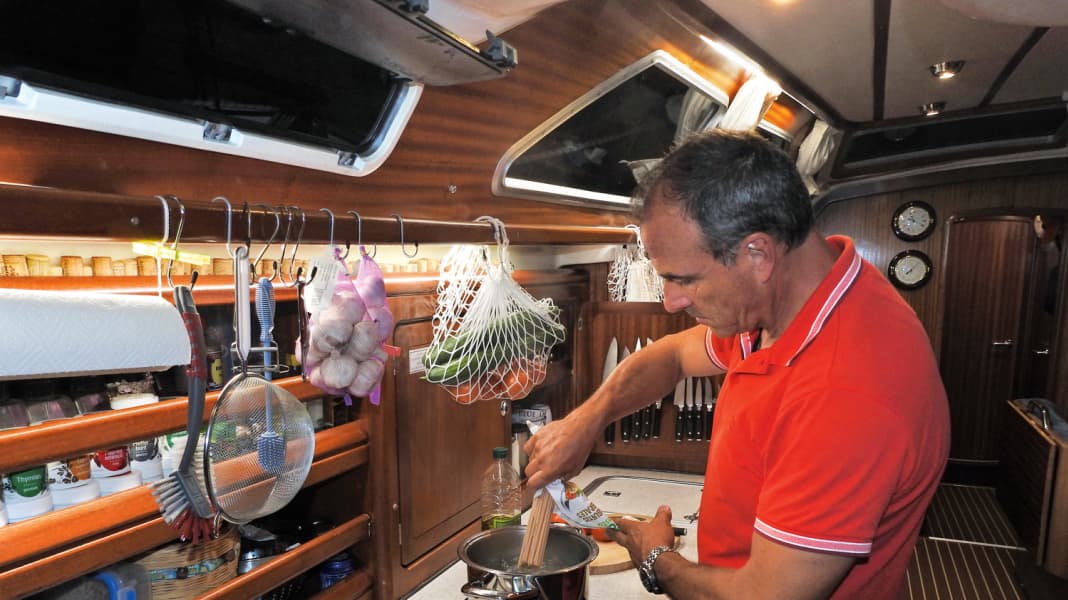
Every owner has their own needs when it comes to comfort on board. The galley equipment on standard boats usually consists of a gimballed gas appliance comprising an oven and hob with at least two burners. Many standard boats provide for the use of blue 2.75 kg butane gas cylinders ("Campingaz"). There is nothing wrong with this as long as the system is regularly checked and maintained. Cooking with gas is very good and butane gas is a highly efficient source of energy. However, the cylinders are not exactly cheap by comparison, empty quickly with frequent cooking and are not available everywhere in the world.
Many sailors therefore use additional electrical appliances with a shore power connection in the harbour. This is particularly common for long-distance sailors, as they spend significantly less than 20 per cent of their time on passages and the far greater proportion in anchor bays or marinas. The prerequisites for this are already in place on most standard boats with a shore connection and 230-volt on-board power supply.
If you want to use the kettle or induction plates without shore power, you also need a powerful inverter, sufficient battery capacity and energy sources for recharging. The inverter converts the DC voltage of the vehicle's electrical system into a 230-volt AC voltage. To ensure that more than just simple kettles work faultlessly, a device with a clean sine wave, often referred to as "pure sine", should be selected. When using household appliances, it is important to understand the electrical power with which these appliances operate. The electrical power is labelled "P" and is given in watts. It is the product of the electrical voltage and the current.
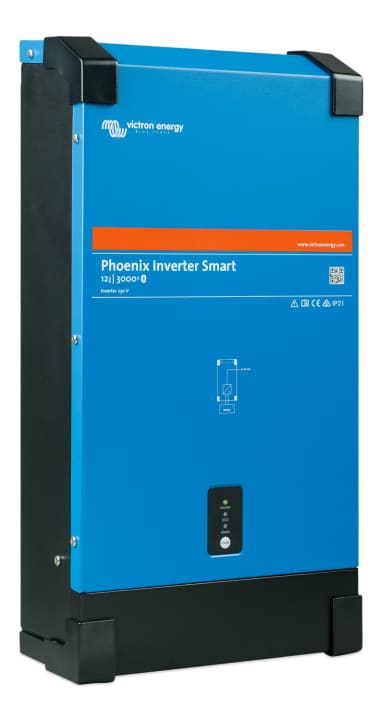
Important criterion: how many amperes?
Example kettle: This is operated with the usual AC voltage of 230 volts. The rating plate shows the values for the AC voltage: 220-240V, the frequency: 50/60Hz and the power: 1,250-1,500W. As the power grids are subject to fluctuations, many of them are used for a mains voltage inverter: alternating current from the battery of 230 volts results in an output of 1,375 watts. The current is calculated by dividing the power by the voltage, which results in a current of 5.98 amps in the example. This means that our shore power supply should deliver at least six amps of current, which is no problem in most harbours.
Outside the Baltic Sea, there are often even 16 amps available per socket. If you want to use the kettle at anchor, the inverter must be able to handle the required power. A distinction must be made between two values, as the maximum power of the inverter is usually specified in addition to the continuous power. The continuous power is relevant for the kettle, which is in operation for several minutes. The maximum power is often twice as high, but the inverter can only cope with it for a few milliseconds. Just long enough to buffer the higher inrush currents of electrical appliances with motors. For example, a commercially available mixer in the pantry. It is specified with 400 watts of continuous power. When the appliance is switched on, up to six times the power consumption can be expected. This means that the inverter must supply 2,400 watts for fractions of a second to switch on such an appliance.
How many watts the individual appliances need when cooking on board
A continuous output of 2,000 watts or more is recommended, so you are generally on the safe side in the pantry. This is because it enables the use of the most common kitchen appliances, including induction hobs. Here is a list of the typical power consumption:
- Single hob or induction hob: up to 2,000 watts
- Double hobs usually have one hob with around 2,000 watts and a second hob with around 1,500 watts
- Combination appliances with oven, microwave and grill: approx. 2,000 watts
- Kettle, coffee machine or coffee maker: approx. 1,500 watts
- Bread maker: approx. 600 watts
- Rice cooker, blender: approx. 400 watts
When purchasing a new inverter, you should also consider a combined device. These combine inverter and shore power charger in one housing, which saves space and simplifies installation. Depending on the model, shore power connections from the battery that are too weakly fused can also be supported. These support functions were originally intended to work with a generator as the primary 230-volt power source, but they work just as well on the shore power grid. Shore power and inverter are connected in parallel internally.
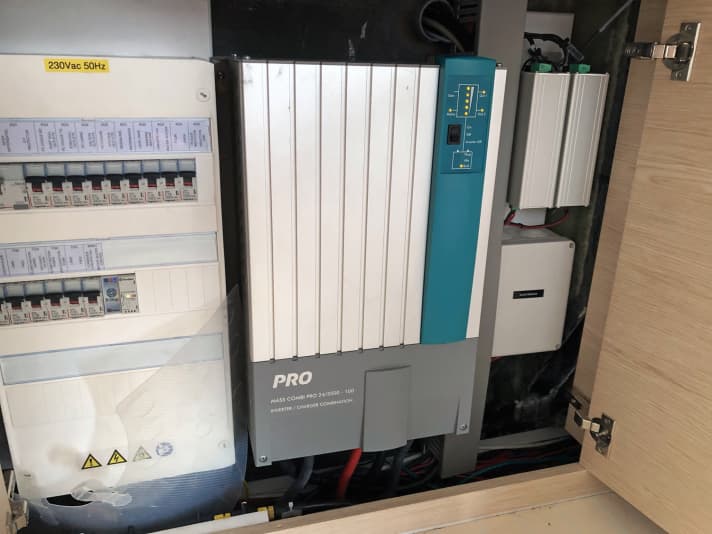
Monitoring is mandatory in Germany
The problem with this is that, in Germany at least, the regulations are being breached: As the system basically feeds into the shore grid, a so-called ENS (device for grid monitoring with assigned switching devices) is prescribed, which interrupts the feed-in if the shore grid fails. Without automatic interruption, the yacht becomes a power station and supplies the harbour with 230 volts virtually backwards despite the main fuse having tripped. Although the inverters have automatic grid monitoring, this is generally not authorised as an ENS. The advantage is that these devices provide an uninterruptible power supply of 230 volts if the shore power fails. A number of other advantages are offset by a disadvantage: If the device fails, both the charger and the inverter are not available on board.
One such charger-inverter is the CombiMaster 12/3000-100 from Mastervolt. It delivers a maximum of 5,200 watts and 2,600 watts continuously and can fill the on-board batteries with a current of up to 100 amps. You have to invest around 1,700 euros for the 9.3-kilogram device. If you need more power, you can opt for devices such as the Mass Combi Ultra from Mastervolt. The main feature of these appliances is that they can be operated in a parallel circuit. This means that both the charging current and the inverter power can be increased by linking several devices. The devices connected in parallel also work redundantly. If one inverter fails, cooking can continue with at least half the power. The smallest appliance in the Ultra series already delivers 3,000 watts, but also costs over 3,000 euros
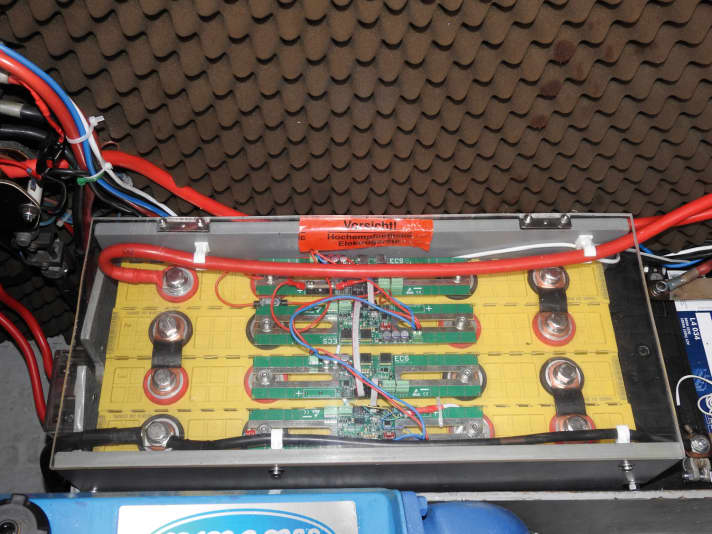
Installation by professionals only
No matter which solution you choose: Such powerful inverters require professional installation. This particularly concerns the installation location and the cable cross-section between the battery and the inverter. Both devices should be installed as close to each other as possible. This is because enormous currents are required in the vehicle electrical system to provide the power required for the kitchen appliances on the 230-volt side. Assuming an on-board voltage of 12.8 volts and the 1,375 watts of the kettle, this results in a current of around 140 amps with an efficiency of 76 per cent. Even at a distance of two metres, this means that cables with a cross-section of 35 square millimetres must be laid. In reality, the maximum power of the inverter is decisive for the design of the cables. The appliance manufacturer usually specifies the required cross-sections in the instructions. It goes without saying that such thick cables cannot be connected using luster terminals, which means that professional cable lugs and the corresponding crimping tools are also required when assembling the cables.
The high currents can also be problematic for the on-board batteries, at least if the energy storage devices still work with lead and acid. The maximum continuous current output depends heavily on the size of the battery. For lead-acid batteries, it is usually 30 to 50 per cent of the nominal capacity. This means that at least 250 ampere hours would be required for the 127 amperes of the kettle. The situation is much better with lithium batteries. Even inexpensive models easily deliver continuous currents that correspond to the battery capacity. However, battery management is the bottleneck here. More sophisticated systems achieve double the capacity values, i.e. a 100 ampere-hour battery can withstand a discharge of 200 amperes.
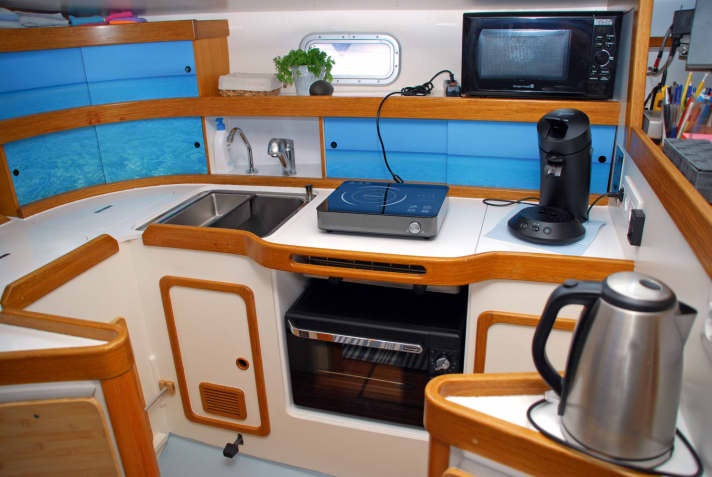
This is how much electricity is consumed when cooking on board
The capacity of the on-board batteries is therefore no longer a knock-out criterion. Nevertheless, the question arises as to how much energy is actually required to operate electrical kitchen appliances. We are starting from the largest ready-made lithium battery currently available. The block from Liontron, for example, offers a usable capacity of 300 ampere hours, weighs around 35 kilograms and costs around 3,000 euros. The amperage was measured on the battery monitor during the cooking process and the battery capacity was determined using the battery monitor before and after cooking.
- Cooking a pot of pasta on an induction hob: With preheating, the cooking process took around 15 minutes, drawing 124 amps of power from the lithium battery. This corresponds to a capacity of 31 ampere hours.
- Allow the Bolognese to simmer for about two hours: Cooking requires around 500 watts of power from the induction hob. This draws 39 amps from the battery. This corresponds to a draw of 78 ampere hours.
- Fry steaks in a cast iron pan: To do this, the induction plate is required to deliver a maximum output of 2,000 watts. The frying process, including heating up, takes ten minutes, during which the inverter draws 200 amps and consumes 33 ampere-hours.
- Boil one litre of water in the kettle: This process takes 4.5 minutes, during which time the on-board battery is charged with 140 amps. This corresponds to a drain of 12 ampere hours.
Depending on the energy sources available on board, extensive cooking with electrical appliances is also possible in an anchorage. It is important to take into account the consumption in the energy balance when regularly cooking electrically. After all, the energy drawn must also flow back into the battery, either via shore power or at sea using a wind generator, solar system or alternator.
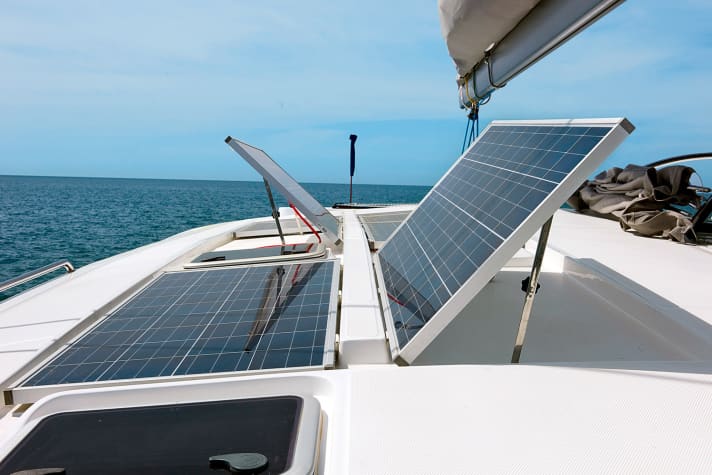
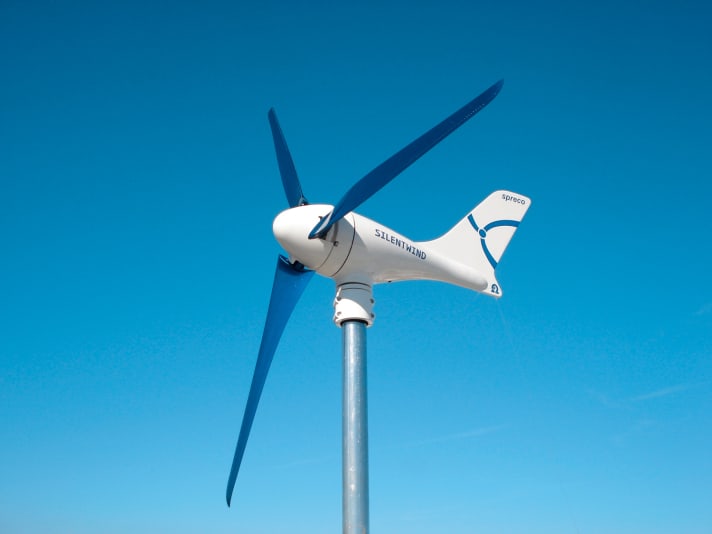
In addition to the energy balance, there is also the question of practicality. Some multihull yacht manufacturers offer to equip the galley with an induction hob and electric oven at the shipyard. On multihulls, such solutions are also possible without gimbals, as the boats hardly heel. For example, the Danish Dragonfly-40-Tri can be ordered with an induction hob. A silicone mat is placed underneath to keep the pots on the hob even in rough weather. It is much more difficult for owners of monohull boats, at least when cooking underway. A mobile electric cooker could also be used in the anchor bay or harbour due to the lack of heeling. Simple models are available from as little as 90 euros, and even a mobile 2,000-watt induction hob from a discounter can be used.
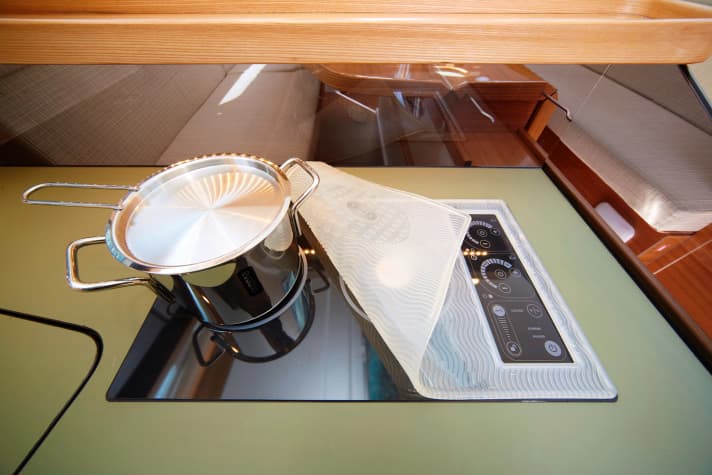
When selecting appliances, it is advisable to look towards motorhomes. Electric cooking is the trend among campers. It becomes more difficult if the system is to work in situ. This is because there are currently hardly any ready-to-install induction cookers with gimbals. The Ocean Chef 3 model is produced by GN-Espace from England and has three hobs and an electric oven and grill. Almost five kilowatts are required to use all functions simultaneously. Whether the cooker fits into the existing recess of the gas hob must be checked carefully, as it is slightly wider than the usual gas models due to the complex suspension. The price of around 5,600 euros is also likely to be an obstacle.
Self-build as an alternative
The Italian manufacturer Techimpex offers various versions of marine-grade electrical appliances for cooking, including the Horizon3 cooker with three induction hobs and oven, as well as the Horizon4 with four induction hobs and a combination of oven, grill and microwave. All appliances have a cardanic suspension. Power consumption figures and prices are not yet known.
The British electrical specialist Sterling Power is another of the few suppliers of induction hobs for on-board use. The plates are designed for permanent installation and are equipped with an external control panel. Two sizes are available with a maximum output of 1,000 or 1,800 watts. The special feature here is that the latest version only starts at half power when switched on, which is why the plates can be operated with comparatively small inverters, ideal if cooking is only rarely to be done on battery power. Price: 86 or 121 euros (gotthard-yacht.com).
Alternatives include DIY solutions using built-in hobs and electric ovens; there are also various videos and blog posts about this on the internet. In some cases, the housing of the old gas hob has simply been reused. However, there is no guarantee that such designs are safe to operate. If installed incorrectly, a 230-volt kitchen appliance has a similar potential risk as a faulty gas system. With a professional 230-volt installation and operation as intended by the manufacturer, however, there are virtually no limits to the creativity with which electrical appliances can be utilised in the galley. Modern standard yachts already have spaces for coffee machines or built-in microwaves. A permanent place for a bread maker would also be conceivable; these appliances work even when the yacht is heeled. A Thermomix or other multifunctional cookers are also increasingly finding their way on board.
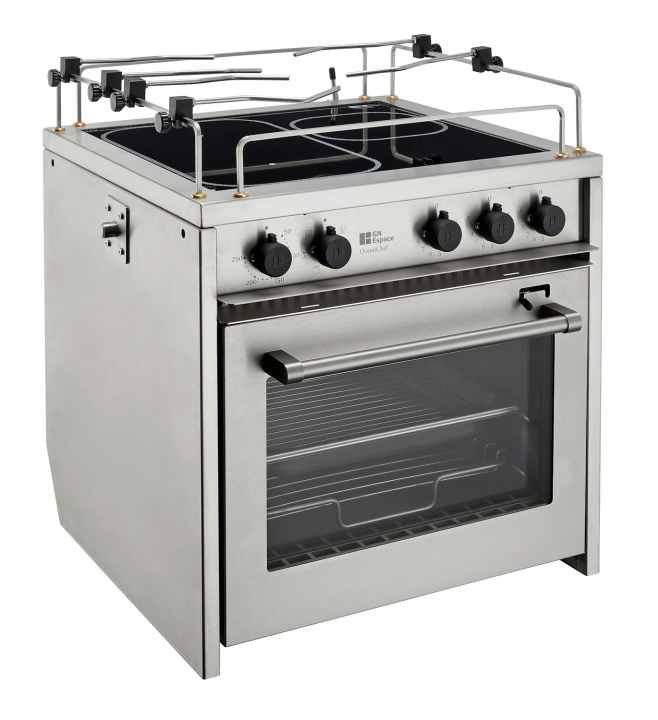
If the energy balance allows it, for example if a diesel generator is available, the only thing standing in the way of a complete changeover are the almost non-existent seaworthy built-in cookers. However, an induction hob and kettle that are only used in the harbour can also significantly reduce gas consumption. Every owner must find the right balance between minimalism and high convenience for themselves. In practice, the use of electrical household appliances has proven its worth. Thanks to lithium batteries and effective wind and solar generators, the technical requirements on board are now relatively easy to fulfil.

